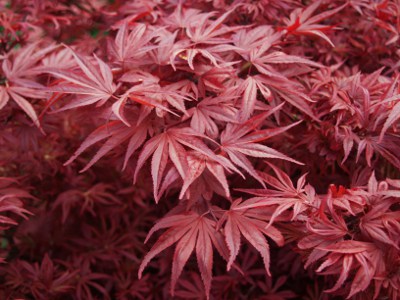Japanese Red Maple Tree
Category: Deciduous Trees

Facts about Japanese Red Maple Tree, "Scientific name for Japanese Red Maple Tree is Acer palmatum". The Japanese Red Maple tree is also known as Acer palmatum. The word 'momji' is also used in Japan for Red Maples. The Japanese Red Maple Trees can be cultivated as small trees or large shrubs. The exquisite red leaves of Japanese Red Maple Trees create a very ravishing atmosphere. Due to their resplendent leaves, they are often considered as ornamental trees. They have been grown in temperate regions of Japan since many ages. Not only that, they are also found in other Asian countries like Korea and Eastern Mongolia as well as in South Russia.
Japanese red maple trees have a medium growth rate. The Japanese Red Maple Trees can also be cultivated through ripen brown seeds of other Japanese maple trees. They can be grown on grounds or in containers. You don't need any special equipment to grow Japanese Red Maple Trees . They can be grown in the sun or the shade. They have to be properly fertilized. For fertilization, organic compost is mainly preferred. It is beneficial to prune them during nippy and freezing weathers as well as to avoid infected leaves.
They are used as a means to provide shade. Their bark is strong and tough, so they can also be used by furniture industries as well.
Despite their many pros, Japanese Red Maple Trees come with their fair share of cons. Japanese beetle is a kind of Japanese Maple pest which infects these trees terribly. Besides that, scale, mealy bugs and mites also attack these trees. Another type of disease that Japanese Red Maple Trees have is Verticillium wilt. When the bark of this tree is damaged, a sap oozes out from canker of the bark which leads to fungal infection, and hence it damages the tree. Moreover, if the tree is not grown in a well-drained soil, then the roots can easily be water-logged.
Bark of the Japanese Red Maple Tree protects it from the elements and is made up of dead cells.
Japanese Red Maple Tree roots usually grow two to three times the width of the tree branches. The ideal time to fertilize your Japanese Red Maple Tree is in late fall or early spring. If you want to transplant a Japanese Red Maple Tree do it in fall, this is ideal for most trees.
Japanese Red Maple Tree growth is referred to as Meristem (The undifferentiated embryonic plant tissue from which new cells are created, as that at the tip of a root or stem). This tissue can be found at the tips of shoots and leaves. Inside the stem growth in thickness occurs at the vascular cambium.
Japanese Red Maple Trees make their own food from sunlight, carbon dioxide, water, and nutrients from the soil.
If grown with care, Japanese Red Maple Trees can enhance the beauty of your garden due to their breathtakingly appealing color.
A Full grown Japanese Red Maple Tree can absorb as much as 48 pounds (21.77 kg) of carbon dioxide a year. The same Japanese Red Maple Tree could also produce enough oxygen in a day for two people. In a single day, a large Japanese Red Maple Tree can drink up to 100 gallons (378.5 liter) of water from the ground and discharge it into the air.
You can tell a Trees age by the number of growth rings. Growth rings size shows what kind of conditions accrued that year, the temperature and if it was a dry or wet year.

 Back To Category Deciduous Trees
Back To Category Deciduous Trees